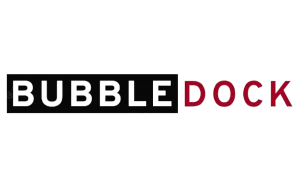The credit share for NBFCs in India has been growing since 2015, indicating an improvement in the infrastructure. It has seen a growth from 10 percent to 13 percent during this timeframe. Because of this pattern, it is clear that, alongside reputed banks, you would come across various NBFCs when doing your research for the right lender to take out a home loan. Let’s look at the different variables that separate NBFCs and banks.
How does the NBFC vary from banks?
Nowadays, once they fulfill the requisite qualifying requirements, loans have become more available to borrowers. When deciding between banks and NBFCs, the main issue arises in the complexity of the home loan process. The RBI reported in a Financial Stability Survey that NBFCs are outperforming banks, with a growing customer loyalty by 15%. The NBFC has some distinctions and some benefits over banks. Four of the distinctions are:
- NBFCs are registered under the Companies Act, 1956, while banks fall under the RBI-Banking Act, 1956.
- Unlike banks, NBFCs do not accept demand deposits.
- Maintenance of the reserve ratio is compulsory for banks only.
Any of the NBFC ‘s benefits over banks include:
- Quicker loan sanctioning.
- Flexible arrangements and terms.
- Attractive qualities and advantages for current and existing borrowers alike.
- A number of personalized loans and other financial products are offered.
- Better quality of customer service.
- It provides affordable loans at relatively lower interest rates.
Now that you know how NBFCs are more useful, approach PNB Housing today without any hassle and satisfy all your financial requirements.
Interest Rate Differences
Banks work under the Reserve Bank of India regulation strictly and explicitly, while under the Companies’ Act, 1956, NBFCs are established. This fundamental disparity has a clear effect in terms of the offer of interest for loans approved by banks and NBFCs. This helps banks, whose rates are explicitly related to MCLR, to typically apply floating interest on your home loan.
In this scenario, prices rise or decrease based on changes in RBI regulation, which are influenced by economic factors. So, prior to time, find out all the variables that affect the home loan interest rate.
In contrast, the interest rates on home loans are set by NBFCs according to the Prime Lending Rate, which is not connected to the RBI. Here, since the lender has the right to determine the interest with more freedom, you can bargain with the lender to get a high sum sanctioned at a nominal interest rate. However, this depends on you meeting all the eligibility requirements needed and getting a decent credit score.
Flexibility in the loan term
In terms of the ease they offer on your loan terms, NBFCs often have an advantage over the banks. NBFCs also allow you to easily take out a home loan by applying for it online, but with some banks, you will also be able to apply online.
In addition to the simplicity of the application, you can use a sanction of an amount up to Rs.10 crore within 72 hours of your application with renowned NBFCs, like PNB Housing. Also, the documents required for home loan from NBFC are way lesser than what the banks demand.



















